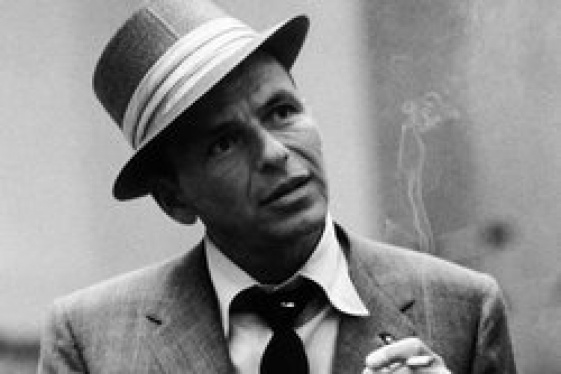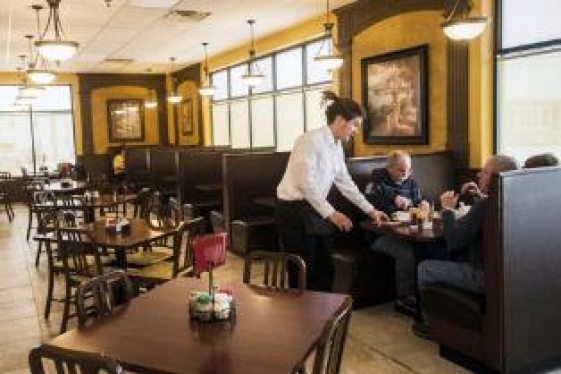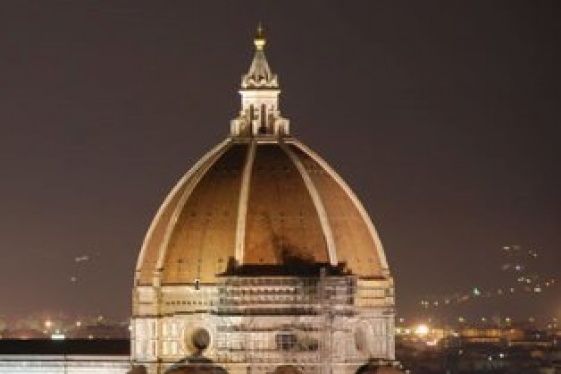
Bill Ronayne (President of the Mario Lanza Institute and Museum)
La celebrazione del talento e dell'italianità di Mario Lanza a Philadelphia

The world of American entertainment has a history that is truly full of Italian American talents, in every field. When it comes to music, there are many singers who have brought up the pride of Italian immigrants who have seen in the success of these great artists also a sense of pride for their origins, often described without respect and with many unfair and brutal stereotypes.
One of the most beautiful stories about these successful artists is that of Mario Lanza. It is to him that a museum in Philadelphia, PA, is dedicated: and our guest in this interview on We the Italians is the President of the museum. We would like to thank Bill Ronayne for his availability and for the great work of research and activities that tell and celebrate the great Italian American talent of Mario Lanza.
Bill, first let me ask you a little bit about yourself. Do you have Italian ancestry?
Yes. My mother was full Italian and my father was half Italian and half Irish.
How did you get into the Mario Lanza story?
I’ve been a fan of Mario Lanza since the age of 7 and have enjoyed listening to his recordings and watching his films for many years. My parents liked him as well. I attended the Mario Lanza Ball in Philadelphia in 1999 and decided to start a Mario Lanza fan club in New York called The Mario Lanza Society of New York, publish a 16-page newsletter called “The Legacy of Mario Lanza” and have quarterly events at an Italian restaurant where we would play his recordings and have a singer come to perform. In 2001 I was asked to join the board of the Mario Lanza Institute and became the Publicity Director. Later on I became the Secretary on the board as well and then Vice President. In 2010 I became the President of the nonprofit organization.
This year marks the 100th anniversary of Mario Lanza's birth. Can you please tell our readers about his life and career?
Mario Lanza was born Alfredo Cocozza on January 31, 1921 to Italian immigrants Maria and Antonio Cocozza in South Philadelphia. As a boy he sang along with his father’s Caruso records and his voice was discovered. Freddie (Alfredo) began vocal studies and an audition was arranged with Serge Koussevitzky which gave young Freddie a scholarship to the Tanglewood Festival where he would appear as Mario Lanza in “The Merry Wives of Windsor” to great acclaim.
Following his study at Tanglewood and before entering the Armed Forces in December of 1942, Lanza worked with Metropolitan Opera baritone Robert Weede. Upon his entry into the Armed Forces, Lanza’s talent was immediately recognized and he was put into Special Services. He sang in numerous shows including “On the Beam” and Winged Victory.”
Pvt. Cocozza was honorably discharged on January 29, 1945 and married Betty Hicks the sister of an Army buddy on April 13, 1945. In June of 1945, Lanza came to the attention of RCA and made some test recordings. He was immediately signed to the prestigious Red Seal label and given $3,000 for study.
With the help of Robert Weede, Lanza was engaged as a replacement for tenor Jan Peerce on the “Great Moments in Music” radio show where he made his debut on October 24, 1945. Mario Lanza appeared regularly on the radio and in concert and began to study with Enrico Rosati who was the teacher of the great tenor Beniamino Gigli.
In 1947, Columbia Artists Management teamed Lanza with soprano Frances Yeend and bass baritone George London to form the “Bel Canto Trio.” They performed all over the US and in Canada and Mexico to great acclaim. In August of that year, tenor Ferruccio Tagliavini was scheduled to appear at the Hollywood Bowl but canceled. Lanza was suggested by Hollywood Bowl board member Ida Koverman, who had heard him a year earlier. He was joined by Frances Yeend with Eugene Ormandy conducting. Koverman was also the secretary to MGM head Louis B. Mayer so she, Mayer, and Kathryn Grayson attended the concert. Lanza was invited to come to MGM the next day where he was signed to a 7-year contract.
The concert was a great success but it marked a turning point in Lanza’s career. Once he stared making films it would be impossible for him to pursue his dream of being a great opera singer. There simply wouldn’t be time to do both. He would make his opera debut as Pinkerton in “Madama Butterfly” with the New Orleans Opera in April of 1948 prior to working on his first film, but would never appear again in opera.
Lanza did feel that his films, concert appearances, radio show and recordings introduced many to the world of opera and good music in general. There were many ups and downs in his career but he always seemed to rally and emerge victorious. His demanding lifestyle often worked against him and his health was not the best ultimately contributing to an early death at the age of 38 on October 7, 1959 leaving his wife and 4 children. In the end he became an ambassador for good music and also was an inspiration for those that followed him. It is for this that he will be best remembered and it is a fitting tribute to his artistry and contribution to music and society in general.
There is a curious detail: unlike many Italians who emigrated to America, were born in Italy and then died in America, Mario Lanza was born in America and then died in Italy. Yet he is one of the most beloved and remembered characters in the Italian American community. I ask you to describe why this great artist was and is so important to Italian Americans.
Lanza was an Italian American born in the Little Italy section of Philadelphia. He possessed a God given voice of immense beauty and power that encompassed many genres of music from opera to the Great American Songbook and was a larger-than-life personality. He became an inspiration to many and a hero and role model to Italian Americans as someone who came from modest means and through his talent rose to great heights in a celebrated international and all too brief career.
Let's talk about the museum. How the idea of the Mario Lanza Institute and Museum was born?
The Mario Lanza Institute was founded by family and friends of Lanza’s in 1961 who wanted to perpetuate his dream of helping young aspiring opera singers through scholarships. The inception and creation of the Mario Lanza Museum was also done around the same time by Nick Petrella, a friend of Mario Lanza who had a record shop near South Philadelphia High School and devoted a space in the back to display the memorabilia. Incidentally, he would be president of the Mario Lanza Institute for over 30 years until his passing. I became active with Mario Lanza Institute and Museum in 2001 and helped with setting it up in a new location in 2002 and more recently in 2018, found the current location, did a lot of fundraising and oversaw the renovation and setup of the museum space.
What are your activities, and what are you preparing for the future? How can our readers help?
In addition to providing tours of the museum, we regularly have events including lectures and quarterly luncheons at which we show a complete film of Lanza's. We are also planning on holding master classes and other educational events.
Of course, our main event is the Mario Lanza Ball Weekend that takes place in November each year in Philadelphia. This year the Ball, which is a dinner dance fundraiser, is taking place at the IATSE Ballroom on Saturday November 20th at 6pm and will include the finals of the scholarship auditions, a video presentation in celebration of Lanza’s 100th birthday and an auction. The following day, November 21st at 1pm at the Mario Lanza Museum, will be a luncheon that will include a complete showing of Lanza’s film “Serenade.” There is also a welcoming dinner at a restaurant on November 19th given by one of Lanza’s cousins, Carole Shea.
The readers can help by attending our events or though financial support by making an online donation at www.mariolanzainstitute.org or mailing their checks in US dollars to Mario Lanza Institute 1214 Reed Street Philadelphia, PA 19147.
On the occasion of the centenary of his birth you managed to get the street that hosts you renamed Mario Lanza Way...
Yes. I reached out to the local community leaders and residents of the 1200 block of Reed Street where the Mario Lanza Museum is now located to get the street also named Mario Lanza Way in honor of his 100th birthday. It took a bit of time but the City Council of Philadelphia unanimously passed the resolution in December of 2020 and the signs were installed a few days before the 100th anniversary in January of 2021.
There was a slight mistake that eventually was corrected but the fans really enjoy seeing them when they visit the museum. By the way, I was also able to get Governor Wolf to issue a proclamation declaring January 31, 2021 as Mario Lanza Day in the entire state of Pennsylvania.
I think I saw that in Philadelphia, near the museum there is a mural that reproduces a star like the one that Hollywood dedicates to great artists. Is this just a Philadelphia mural, or is there really a star in Hollywood dedicated to Mario Lanza on the famous sidewalk?
Yes, to both. A mural was erected on the corner of Broad and Reed Streets in Philadelphia to honor Mario Lanza in 1997. In 1960, Mario Lanza was given 2 stars on the Hollywood Walk of Fame. One was for being a movie star and the other for being a recording star.
Do you have any relationship with any institution here in Italy that celebrates Mario Lanza? What can Italy do to help your museum?
We currently don’t have a relationship with any institutions in Italy that celebrate Lanza, but had in the past. We would be happy to assist with the promotion of Lanza throughout Italy and to interest the Italian fans in what we are doing here in the United States. Basically, we ask for donations of not just money but Mario Lanza memorabilia that might have been used for promotion of his films in Italy such as posters and lobby cards that could be added to the museum’s display or even newsreel footage. Also, if anyone met Mario Lanza or saw him perform etc., it would be nice to have written documentation for the archives.
I would also like to direct the readers to our web site and to our Facebook page where they can learn more about what we are doing and also enjoy some of Lanza’s recordings as well as television and film clips.
You may be interested
-
Cathedral of St. John the Divine, Oratorio S...
For the first time ever, The Cathedral of St. John the Divine, in collaboration with the O...
-
Ethnic clubs are fading into Beaver County's...
By Tom Davidson When Dominic "Hawk" Santia was a boy, he'd tag along with his fat...
-
Frank Sinatra 100th Anniversary Celebration
Hoboken’s favorite son, Frank Sinatra, continues to evoke images of the good life nearly 1...
-
Holiday Concert with Micheal Castaldo and Ma...
The Mattatuck Museum (144 West Main St. Waterbury, CT 06702) is pleased to celebrate...
-
I Piccoli Cittadini: incontro di educazione...
Saturday, October 24, 10-12 AM in EDT, 1026 Public Ledger Building – 150 South Indepe...
-
Italian Guitarist Roberto Fabbri to Perform...
For the final performance of his spring solo tour, Italian classical guitarist Roberto Fab...
-
Italian restaurant opens in Conewago Townshi...
by Melody Asper Hanover's newest restaurant may seem like an old friend to anyone...
-
Lecture and Concert that bring Italy to New...
Saturday, february 28 - 7 pm ESTChrist & Saint Stephen's Church - 120 W 69th St,...




























